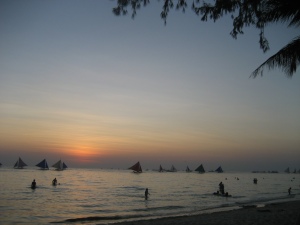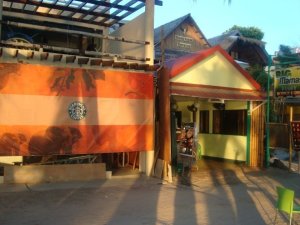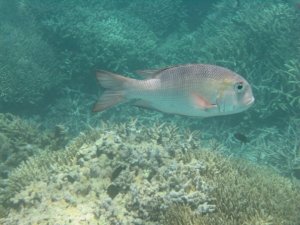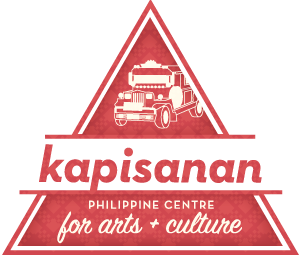PART 2 of 3 for Earth Day 2009 by Leonard
The Philippines is dying.
In true Filipino fashion, this is a melodramatic statement - but it’s also a true one. If it makes you feel better, its not only the Philippines. With climate change, global warming and the depletion of fossil fuels, we’re pretty much all f*cked.

Fast forward to one month ago. My friend and I were going to Boracay to get a bit of everything -- endless seafood buffets with huge-ass prawns, ever-flowing beer oases of Red Horse and San Mig Pale Pilsen, all-night bar hopping and of course, that white sand beach and clear, still water. Sounds like paradise, right? Well, depends on what you expect to find.
I've read the articles so I already knew that Boracay was having problems dealing with capacity -- that the tourism numbers there have risen by tens of thousands in the two years since I had been there and that the island was actually sinking into the encroaching sea.

I still think that it's the finest sand in the world and I've never been in such still, clear water right off the beach -- it was like swimming in a pool -- but now its a pool with the odd plastic bag or water bottle cap floating. Not enough to ruin Boracay - but enough to disturb the serene beauty. I mean, imagine you're chillin' there and a bottle cap floats by? It's a sign of things to come.

We thought that perhaps the out edges of Boracay were more untouched and serene, so we hired a boat to take us around the perimeter of the island. We'd also stop at nearby Crocodile Island, where Lonely Planet wrote about some good shallow reef snorkeling right off the shore. We didn't see too much untouched, but lots of development... the new exclusive glam resorts just near Puka Beach and the big landfil where I suppose all of Boracay's trash goes to accumulate. Anyone know how sewage works on this island?

"Boss, do you have 20 pesos to buy some crackers?" asked Jeremy, our boatman. I thought maybe he just wanted a snack so I gave him enough to buy crackers and bottles of water for himself and the rest of the crew.
Upon arrival at Crocodile Island and just about to jump in the water, we were startled suddenly. "Ice Cream! Popsicle! Ice Cream! Popsicle!" We turned around to see a man in a rowboat with a Nestle cooler on the back. He was selling ice cream right there on the reef - in a canoe. Imagine that, ice cream right on the reef!? That would never happen on the Great Barrier Reef - where are you supposed to throw the wrapper? I didn't see any floating trash receptacle.
Looking below the surface was still an amazing view. As diving and snorkeling usually does, it provided a look into a whole other world -- if you didn't look too close, that is. Upon closer observation, I could see that this coral was grayed and dull, some of the reef now broken and snapped. I've seen the Great Barrier and this wasn't like the other reefs I've seen -- the people who take care of Boracay didn't take steps to protect it and now it's too late. The reefs around Boracay aren't listed by UNESCO as a protected area. They've probably deemed it already too far gone.
Just as we were getting comfortable swimming in the water, Jeremy, our boatman breaks open the cheese crackers he had bought before and begins tossing them into the water around us. Lo and behold, the most beautiful fish began to gather around. All sizes, shapes and colours, single fish and schools, everything from Bottlenoses to Maori Wrasses to Clown Fish -- just like Finding Nemo -- all nipping hungrily at the Skyflakes we were sprinkling into the water.

In Australia, even the dive instructors weren't allowed to feed fish food to the fish in order to not disturb the natural ecology. Here, we were giving them saltines to go with the discarded wrappers from the Drumstick ice cream cones.
No place for the fish to live but lots of junk food.
Sounds like the Philippines.
Previous: PART 1 of 3 - Taal Volcano
